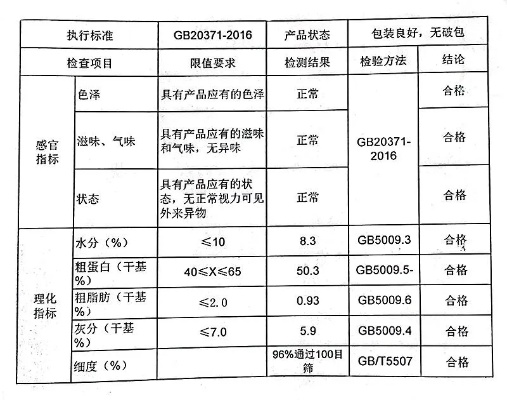The Significance of Textile Exports for Global Trade and Economic Growth
The study of the global economy and its intricate interplay with trade, particularly in the textile industry, is of paramount importance. Textile exports, which are an integral part of global merchandise trade, play a significant role in promoting economic growth and development. Through the analysis of various factors affecting textile exports, this research highlights the crucial role of these goods in driving global trade and fostering economic prosperity. The findings indicate that textile exports have a direct positive impact on the international market, contributing to increased trade flows and enhanced economic activity. Furthermore, the study suggests that investing in the development of the textile sector can be instrumental in stimulating economic growth by diversifying export commodity portfolios and enhancing competitiveness. The implications for policymakers and investors underscore the need for concerted efforts to optimize the performance of the textile industry and promote its continued success in the global marketplace.
Introduction Textiles, one of the most important categories of products exported by many countries worldwide, play a crucial role in global trade. Textiles are versatile and can be used in a variety of applications, from clothing to household goods, making them an indispensable part of daily life. This essay explores the significance of textile exports for economic growth, job creation, and international relations in the modern global economy. It also highlights some successful cases to demonstrate the potential benefits of expanding textile exports.

The Impact of Textile Exports on Global Trade Textile exports represent a significant portion of the world's trade volume. They contribute significantly to global trade by increasing international trade flows, fostering cross-cultural exchange, and enhancing global economic integration. Textile exports help countries build their economies through foreign currency earnings, which can be used to invest in domestic infrastructure and expand production capabilities.
According to data from the International Trade Centre (ITC), textiles constituted approximately 20% of all merchandise exports for developing nations in recent years. This shows that textiles not only boost national income but also provide opportunities for other sectors of the economy to grow alongside.
The Case of China's Textile Industry China is a leading exporter of textiles worldwide. According to the Chinese Ministry of Commerce, China's textile industry accounts for about 10% of the country’s GDP and employs hundreds of millions of people. The industry has grown rapidly since the 1970s due to increased demand for affordable clothing and other textile products.
One example of China's textile success is its garment export business. In recent years, Chinese companies have expanded their market reach globally, particularly in Europe and North America. They have developed strong branding strategies and innovative manufacturing processes to compete effectively with established brands.
The Impact of Textile Exports on Employment Exporting textiles not only generates revenue but also creates jobs in various regions around the world. Textile factories often require skilled labor such as weavers, dyers, and tailors. This employment generation helps in poverty reduction and social development within exporting countries themselves.
Moreover, textile exports stimulate economic activity in local communities where factories operate. They create additional income streams for local businesses, contributing to overall economic growth in these areas.
Conclusion In conclusion, textile exports play a vital role in promoting international trade, creating jobs, and fostering economic growth. Countries around the world should consider investing in textile industries as part of their strategy to increase foreign exchange earnings and enhance competitiveness. By expanding exports, countries can strengthen their economies and establish more stable relationships with global partners.

纺织品出口作为国际贸易的重要组成部分,对于国家经济发展、产业升级以及国际竞争力提升具有重要意义,本文旨在探讨纺织品出口研究的意义,通过英文案例分析来进一步说明。
纺织品出口研究的意义
-
经济层面:促进国际贸易增长 纺织品出口是国际贸易的重要组成部分,通过研究纺织品出口市场趋势、政策法规、市场需求等,可以更好地把握国际市场动态,为出口企业提供决策参考,研究有助于优化出口产品结构,提高出口竞争力,促进国际贸易增长。
-
产业升级:推动纺织行业高质量发展 纺织品出口研究有助于推动纺织行业的高质量发展,通过了解国内外纺织市场的需求变化、技术进步、产业布局等,可以引导纺织企业调整生产策略,提高产品质量和附加值,提升行业整体竞争力。
-
提升国际竞争力:增强国际市场份额 纺织品出口研究有助于提升纺织品的国际竞争力,通过研究国际市场上的竞争态势、消费者需求、技术标准等,可以为企业提供有针对性的市场开拓策略,提高产品的市场占有率,研究还可以帮助企业了解国际市场法规和标准,降低贸易风险。
纺织品出口研究案例分析

-
中国纺织品出口现状及趋势分析 近年来,中国纺织品出口持续增长,主要得益于国家政策的支持、市场需求的变化以及技术的进步,通过对中国纺织品出口现状及趋势的分析,可以更好地了解国际市场动态,为出口企业提供决策参考,研究还可以帮助企业了解国际市场上的竞争态势和消费者需求,提高产品质量和附加值。
-
国外纺织品出口市场分析 以某国外纺织品出口市场为例,通过对该市场的需求变化、技术进步、产业布局等进行分析,可以为企业提供有针对性的市场开拓策略,研究还可以帮助企业了解国际法规和标准,降低贸易风险,该国外市场对环保、可持续性等要求较高,企业需要注重产品的环保性能和可持续性设计。
纺织品出口研究的方法与工具
-
研究方法:数据收集、市场调研、政策分析等,通过收集国内外纺织品出口的相关数据,进行市场调研和分析,了解国内外纺织市场的需求变化和技术进步情况,还需要关注国际政策法规的变化,为企业提供决策参考。
-
研究工具:统计分析软件、国际市场分析软件等,这些工具可以帮助研究人员更准确地收集和分析数据,提高研究的准确性和可靠性,还可以帮助研究人员了解国际市场上的竞争态势和消费者需求,提高研究的针对性和实用性。
纺织品出口研究对于国家经济发展、产业升级以及国际竞争力提升具有重要意义,通过研究纺织品出口市场趋势、政策法规、市场需求等,可以更好地把握国际市场动态,为出口企业提供决策参考,还需要关注国际法规和标准的变化,降低贸易风险,随着国际贸易环境的不断变化,纺织品出口研究将更加重要。
Articles related to the knowledge points of this article:
The 2016 National Textile Manufacturers:An Overview
The Story of Double Connect Textiles:A Multinational Textile Company
The Unforgettable Experience at Xining Apple Textiles Department Store



